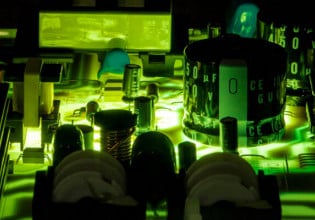Following several months of in-depth investigations, Samsung Electronics today announced the cause of the Note7 incidents and measures to prevent a recurrence during a press conference held in Seoul, Korea. DJ Koh, President of Mobile Communications Business, Samsung Electronics, shared detailed results of the investigation and expressed his sincere apology and gratitude to Galaxy Note7 customers, mobile operators, retail and distribution partners and business partners for their patience and continued support.
Koh was joined by executives from UL, Exponent and TUV Rheinland, leading independent industry groups that conducted their own investigation into various aspects of the Galaxy Note7 incidents. Speakers included: Sajeev Jesudas, President, Consumer Business Unit, UL; Kevin White, Ph.D, Principal Scientist, Exponent; and Holger Kunz, Executive Vice President Products, TUV Rheinland AG. The speakers discussed the findings of the investigations in depth and unveiled new measures Samsung has taken to respond to the incidents.
UL and Exponent both investigated the performance of the batteries and battery charging circuitry. No fault was found with the battery charging circuitry. Batteries were produced by two different companies; Company A produced the batteries in the first recall while Company B produced the batteries that were the subject of the second recall. Both “battery A†devices (from Samsung SDI) from the first recall and “battery B†devices (from Amperex Technology) from the second recall suffered from internal shorts resulting in battery failure.
Root Cause for Manufacturer A: Based on the results of analysis and testing, the most likely root cause for the thermal failure of certain Manufacturer A cells was determined to be unintended damage to the negative electrode windings consistently in the corner of the cell closest to the negative tab. The unintended damage was present in all of the cells examined. The damage was caused by a cell pouch design that provided inadequate volume to accommodate the electrode assembly. The observed damage provides multiple potential routes to internal cell faulting and thermal failure with normal cycling, including compromise of the separator and lithium plating.
Initial analysis of cells from Manufacturer B showed no deficiencies in the pouch, design or manufacturing. Based on the results of analysis and testing, the most likely root cause for the thermal failure of Manufacturer B cells was determined to be internal cell faulting between positive electrode tab welding defects and the copper foil of the negative electrode directly opposite the defective welds. Welding defects in some incident cells were found to be tall enough to bridge the distance to the negative electrode foil. Some cells examined were assembled without protective tape over the positive electrode tab, increasing the likelihood of an internal cell fault.
Further: Poorly controlled welding of the positive tab in Manufacturer B cells creates sharp, relatively tall welding defect features; Normal swelling and contraction of the electrodes during charge and discharge forces the weld defect features into the opposing negative electrode; Short circuit between the weld defect feature on the positive tab and the copper of the negative electrode results in heating of the cell; At high states of charge, the cell heating results in thermal run away.
Fraunhofer investigated the logistics chain from the factory floor to transport and arrival at the assembly plant. Inspections were run from November to December 2016 in the factories Samsung Electronics Vietnam and Samsung Electronics Co., Ltd., Korea. Work processes were inspected by TÃœV Rheinland Factory Assessment Panel from a safety viewpoint and verified by Battery Safety Verification Panel, specific to: Handling, touching and storage of batteries during process steps; Sufficient and effective battery inspection procedures; and Status and improvements of battery safety factors. These inspection results of work processes showed no detection of relevant weakness, concern or any obvious danger affecting the battery safety integrity in the factories during assembly.
In addition, environmental and mechanical stress was measured during transport of two battery pallets between Dongguan/China and Hanoi/Vietnam. Temperature, humidity, strain, acceleration, and geographical position were monitored. After logistic stress simulation the batteries were tested according to international safety standards and the tested batteries passed the tests. This ruled out any impact from the supply chain itself on the battery failures.
Based on what the company learned from the investigation, Samsung implemented a broad range of internal quality and safety processes to further enhance product safety including additional protocols such as the multi-layer safety measures and 8-Point Battery Safety Check. Samsung also formed a Battery Advisory Group of external advisers, academic and research experts to ensure it maintains a clear and objective perspective on battery safety and innovation.
Battery Advisory Group members include: Clare Grey, Ph.D., Professor of Chemistry, University of Cambridge; Gerbrand Ceder, Ph.D., Professor of Materials Science and Engineering, UC Berkeley; Yi Cui, Ph.D., Professor of Materials Science and Engineering, Stanford University; and Toru Amazutsumi, Ph.D., CEO, Amaz Techno-consultant.
“For the last several months, together with independent industry expert organizations, we conducted thorough investigation to find cause to the Galaxy Note7 incidents.†Koh said, “Today, more than ever, we are committed to earning the trust of our customers through innovation that redefines what is possible in safety, and as a gateway to unlimited possibilities and incredible new experiences.â€






